|

Test: Baader 2" Semi Apo Filter

(Pictures from Telescope Express or Baader: trusted sources for astro material)
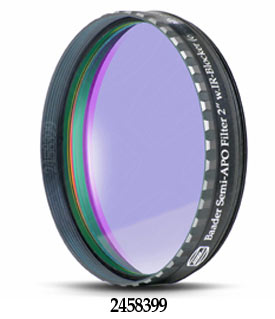
Baader is a well-respected brand for it's high quality filters. One of these filters is the so-called "Semi-APO" filer;
As the name implies this filter can be used on inexpensive Achromat telescopes (the classical Fraunhofer Doublet refractors) to improve the image.
What you typically get with these instruments is - besides value for money - an image that on the brightest stars delivers color error. The stars are surrounded with a purple halo. In addition, both large stars as small stars are little discs instead of needle points;
For visual use not really a problem in most cases and at a cost of 1/10th of the Apochromats (Triplet refractors).
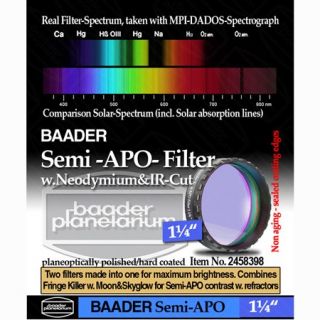 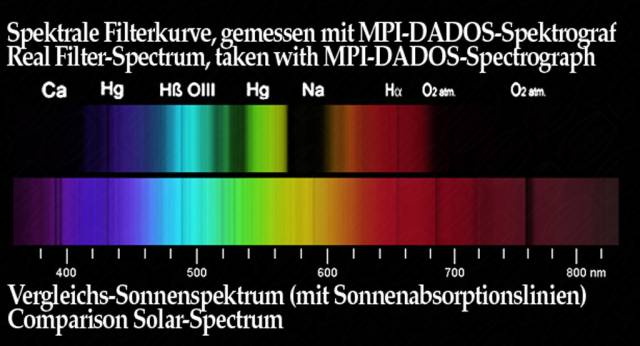
What does it promise?
This filter is actually a combination of both the Moon/Skyglow filter and the Fringe-killer filters; So at the same time it reduces Light pollution, and reduces the Violet-halo around bright stars. It therefore increases contrast and reduces stellar discs.
in the spectrum above it can be clearly seen that there is a nice gap at the Natrium (Na) colors. This is the light emmitted by the notoriuos low-pressure Sodium (Natrium) street lighting (orange colored). At the purple side, around 450nm also a sharp cut-off.
All this while keeping at the same time a good color representation.
Results thus far:
Picture of Capella, both taken 30" on 500 ISO with a (unmodified) Nikon D5100. Lens used a pre-Ais 135mm F2.8.
The lens was equipped with a 52-48mm stepper ring to allow the 48mm (2") filter.
Take 1= without the filter (picture quality has decreased while converting RAW to JPG)
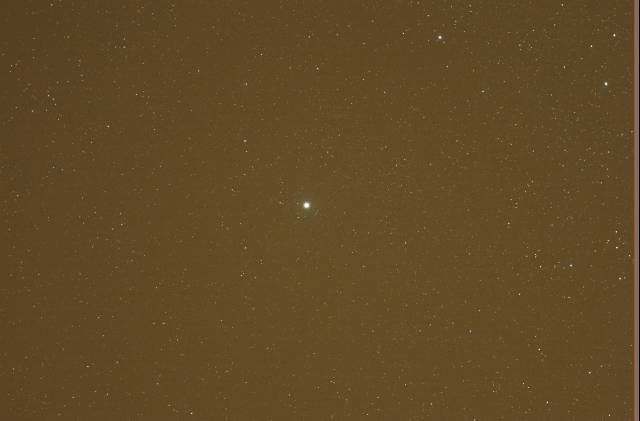
Take2: with the filter

There is an obvious difference in sky background. In addition there is a relection added lower right from Capella;
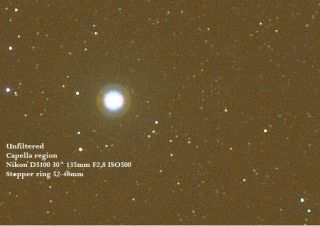 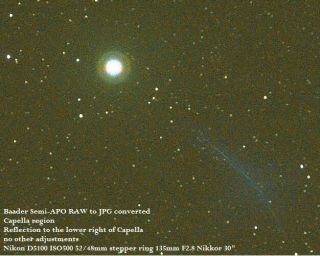
This is the result after simply clicking the Photoshop function "Autolevels" and "Autocolor"
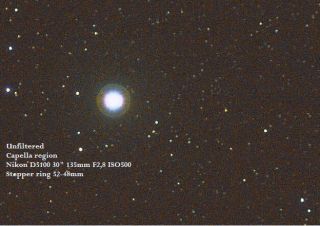 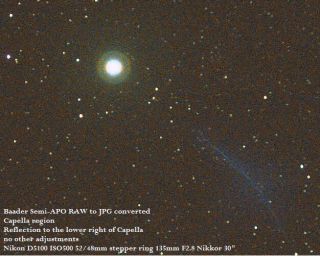
The sky brightness is easily removed by PS. However, extending the exposure beyond 30" would give negatice results (over-exposure). A next test should be to push the exposure time with the filter. While light pollution put the 30" already as a limit for the unfiltered picture, there is maybe still some room left for the filtered exposure. This could bring out fainter stars and more easily increase the integration time.
However it seems already clear that any really bright objects in the scene will result in unwanted reflections; these reflections might be lens-dependent;
Comparisons with a 120mm Skywatcher F/5 Achromat.
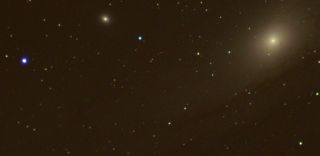 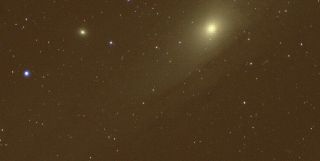
with Semi-APO filter and without
Exposures 1 minute and 30 seconds
Zooming in on the left bright star:
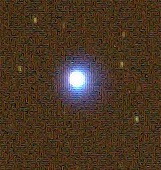 
With and without filter (1 minute and 30 secs)
The purple fringe is not really 'killed' by the filter, in the best case we could say it's slightly reduced.
The preliminary conlusion could be that it does allow for longer exposures by reducing the light pollution.
Color balance is ok, as the following 8 minute exposure shows taken with the 120mm doublet Achromat:
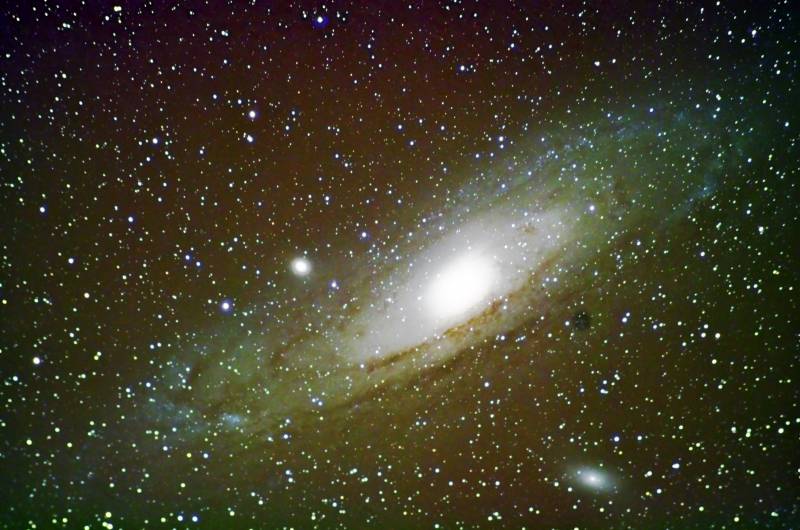
M31 in Andromeda (dust patch to the right of the galaxy).
|